Earthquake volunteers told about their experiences
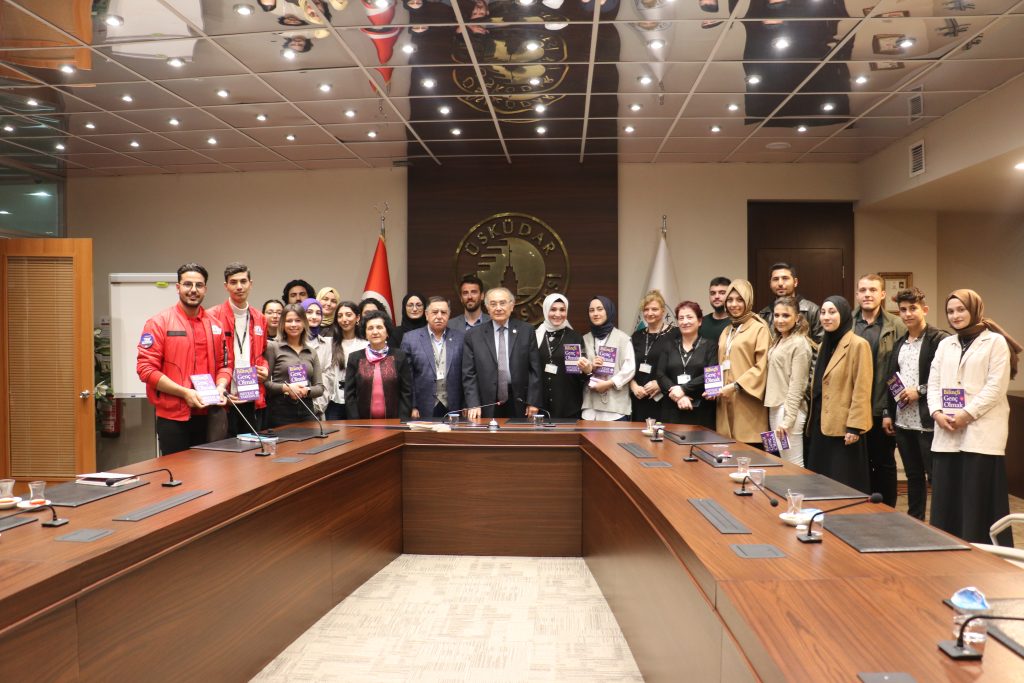
Üsküdar University family and volunteer students who went to support Kahramanmaraş after the earthquakes that were effective in 11 provinces based in Kahramanmaraş on February 6 and called the disaster of the century came together with President of Üsküdar University Prof. Nevzat Tarhan and Rector Prof. Nazife Güngör in the senate hall. Üsküdar University ranks first among the universities that send the most volunteers to the earthquake region among the university organizations on the Anatolian side. Most of the aid provided to the earthquake region was carried out by the clubs of which the students were members within the scope of the Health, Culture and Sports Department of the university. Among the student clubs that the students participated in, there were student clubs such as AFAD Club, Kızılay Club, Psychology Club, Büyüdüm Çocuk Oldum (I Grew Up to Be a Child Club), Outdoor Sports Club and Metaverse and Entrepreneurship Club. Tarhan and Güngör accepted the Üsküdar family who carried out volunteer work in the earthquake region. President of Üsküdar University Prof. Nevzat Tarhan and Üsküdar University Rector Prof. Nazife Güngör accepted the Üsküdar students, who carried out successful voluntary activities, in the Senate hall. Prof. Nevzat Tarhan: “This is an act of volunteerism and devotion” Prof. Nevzat Tarhan stated that he was very touched by the sensitivity shown by the students after the earthquake and said: “You have started an act of kindness. This is an act of volunteerism and dedication. On the first day of the earthquake, you gathered among yourselves although we did not say anything, and you made over 1500 packages. This is a really important event, a great series of memories that you will never forget in your university life and in your own life. Whether this is also a beginning for you, being able to use this intention, effort and this perspective in every positive and negative event in life is a great life experience and an important gain for you. These disasters and difficult conditions are a more maturing process for young people.”. Prof. Nevzat Tarhan: “Let’s turn it into a book under the name of earthquake diary” Prof. Nevzat Tarhan emphasized that students should act as a team in an organized manner and said that “The biggest reason you can create this beautiful union right now is because you can be organized. Since you can be organized and work in teams, everyone is a part of this team. That’s why some of them stand out more and some of them stay in the background, but in the end, they are all part of this team. In this respect, it is very important to maintain this excitement. As an institution, our duty is to create our ground and provide opportunities against such activities. In order for this act of kindness to be permanent, we need to keep it alive on our own digital platforms, we need to continue this movement so that it can be an example to young people and others can benefit from it as a reference. It is really important to turn the experiences here into a documentary. Everyone should write about their experiences while they are fresh, and we can even turn them into a book under the name of an earthquake diary if necessary.”. Prof. Nazife Güngör: “University means leading the society” Prof. Nazife Güngör stated that Üsküdar University students were models and leaders after the disaster of the century and said that “I wish such an incident and disaster had not happened, but it is happening when it does, my friends. University means to lead the society, and we will do what is necessary in this direction and you are doing it. Congratulations on being embraced this situation. You are an example to young people, an example to the society and a support to the society.”. Göngör: “Every student should write about their experiences” Prof. Nazife Güngör, who continued her remarks on earthquake diaries, said: “Each of our friends should express their feelings because the emotional relationship you all have is different even though you have all seen the same environments. One of you is influenced by little Tuğba, the other by a quote by little Mehmet, so if you express these feelings personally in the form of a few pages of essays, each of you will have a part. These essays are organized by a professor or a friend with a strong pen, and we publish our page in digital book format as Üsküdar Publications under the name of earthquake diary. In this way, we will make these experiences permanent.”. Teknofest Finalists came together Üsküdar University Faculty of Medicine Metaverse and Entrepreneurship Club students participated in Teknofest with the “META-TIP” project. The team was among the finalists at Teknofest with 89.5 points. In the project team carried out under the supervision of Üsküdar University Faculty of Engineering and Natural Sciences, Department of Molecular Biology and Genetics Cihan Taştan and Dr. Nebiye Yaşar, Project Captain Intern Dr. Mustafa Şanverdi from Üsküdar University Faculty of Medicine, Üsküdar University Computer Engineering student Metaverse and Entrepreneurship Club President Emre Kaan Şanverdi participated voluntarily in the works carried out in the earthquake region. Those who participated in the meeting held at the Central Campus Senate Hall are as follows; Üsküdar University Secretary General Şelçuk Uysaler, Young Minds Academy Application and Research Center Director Dr. Nebiye Yaşar, Haydi Tut Elimi (Hold My Hand) Association Secretary General Ayşe Banu Güncenci, HCS Department Head Özcan Demir, Corporate Communication Department Head Tahsin Aksu, HCS Manager Sadık Paksoy, Event Manager Dağhan Rasim Işık, HCS Event Specialist Meliha Merve Günaltay and Media Relations Specialist Ayşe Nur Akçelik İlgeç. The event ended with a group photo shoot. Üsküdar News Agency (ÜNA)
Üsküdar family is in the earthquake region during Ramadan…
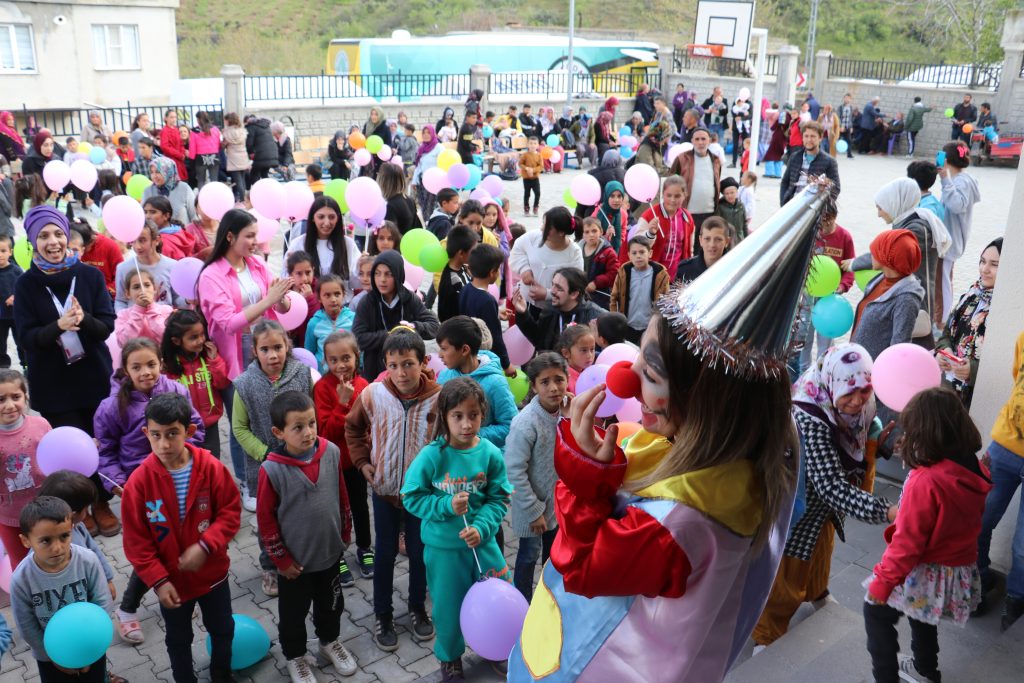
Üsküdar University is again in the earthquake zone, which has been continuing to give support and works for the region after the disaster of the century experienced in Kahramanmaraş on February 6 and that caused devastating results in 11 provinces. Üsküdar family who delivered the aid they collected to the earthquake victims in Kahramanmaraş and Hatay during Ramadan, spent a long time with the earthquake victims. Üsküdar family brought gifts to the children who felt the pain of the earthquake most deeply and relived their pain even if just little bit with the colorful and entertaining activities they organized. After the earthquakes that were effective in 11 provinces and called the disaster of the century, the earthquake victims in Kahramanmaraş and Hatay were visited under the leadership of Üsküdar University Health, Culture and Sports (HCS) Department and Haydi Tut Elimi (Hold My Hand) Association. Little children were not forgotten during the visit where supplies and clothes were delivered. The academic and administrative staff and students of the Üsküdar family delivered the aid they collected to the earthquake victims in Kahramanmaraş and Hatay. Üsküdar family visited Dedeler Primary and Secondary School in Kahramanmaraş Türkoğlu, Reyhanlı Education Campus and tent cities in Hatay. The event was attended by HCS Director Sadık Paksoy, Üsküdar University Young Minds Academy Director Dr. Nebiye Yaşar, HCS Specialist Selman Utku, Haydi Tut Elimi Association Secretary Ayşe Banu Güngenci, Board of Directors members Serpil Tarhan and Ayşegül Şekli and students. Within the scope of the visit, residents of Türkoğlu district of Kahramanmaraş were also visited. Türkoğlu Mayor Osman Okumuş, Dedeler Village Headman Kahraman Güneş, Dedeler Elementary-Secondary School Principal Mustafa Bozdoğan, Dedeler Elementary-Secondary School teacher staff, village community council and village residents wholeheartedly welcomed the Üsküdar University members. They were painted together despite of the destructive pain of the earthquake… A team of 30 people who visited Dedeler Elementary-Secondary School in Türkoğlu district of Kahramanmaraş carried out activities with children and provided clothes and supplies. The volunteers created beautiful and meaningful memories with the children. Magic shows and entertaining activities with clowns were held. Face paint was done to children, and candy and balloons were given to children. The team, which met with great interest, also experienced emotional moments from time to time. Sadık Paksoy: “You will come and teach in this school again…” HCS Manager Sadık Paksoy, who is from Kahramanmaraş, informed the team about the history of the province and wished the earthquake victims and their families get well soon. Paksoy talking to the children said that “I was born in this village. I hope you will study like us and come to universities. You will be a very, very great engineer, doctor, economist, banker, teacher. You will come again and teach in these schools. May Allah not show such earthquakes again.”. The residents of Türkoğlu Dedeler Village, who expressed their thanks for the visit, hosted the team at the rich iftar table consisting of local dishes. Reyhanlı Education Campus was visited The team went to Hatay after Kahramanmaraş. They visited Reyhanlı Education Campus which is an international educational institution. Later, they visited the tent cities in the center of Antakya and offered treats to the children there. News: Ebranur Özdemir Photographs: Kaan Güzeltepe Üsküdar News Agency (ÜNA)
Üsküdar University “Earthquake Manifesto”
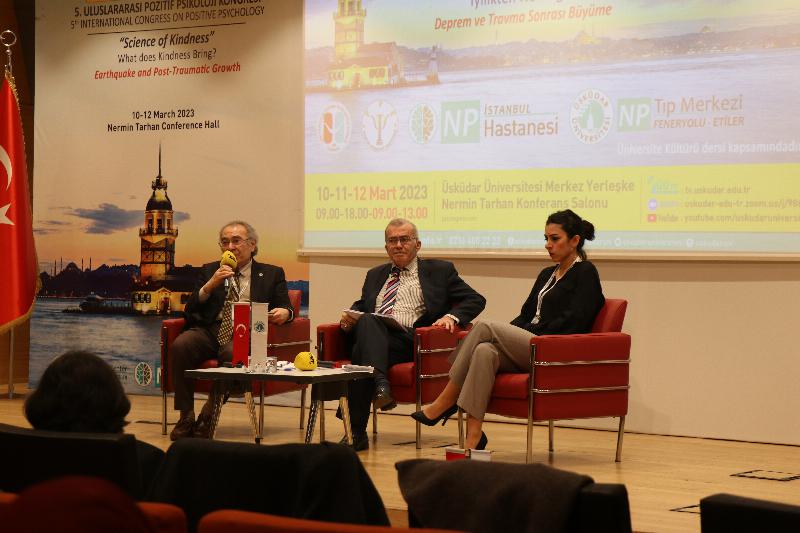
This year, the 5th International Congress of Positive Psychology was completed after 3-day sessions, which was organized by Üsküdar University organized with the theme of “Science of Kindness/ What does Kindness Bring? & Growth After Earthquake and Trauma“. In the “Manifesto for Post-Traumatic Growth as a Result of Earthquake” announced by the congress organizing committee, it was emphasized that traumatic experiences such as earthquakes can cause not only psychological disorders but also positive change and development. In the 7-point manifesto, attention was drawn to the lessons to be learned from the Kahramanmaraş-based earthquakes that devastated our country. In the manifesto, where it is emphasized that the earthquake should be considered as an opportunity to direct growth and development and increase awareness for all our citizens and our country, it was expressed that “Activities that support development and learning should be increased in terms of awareness, preparation and coping in all children, young people and adults in our country. As a society, steps should be taken to lead to development in terms of cooperation, mutualization and organization.”. Kahramanmaraş earthquakes must be seen as an opportunity Üsküdar University 5th International Congress of Positive Psychology was held with the theme of “Science of Kindness/ What does Kindness Bring? & Growth After Earthquake and Trauma” with the partnership of Üsküdar University, NPİSTANBUL Hospital, NP Etiler & Feneryolu Medical Center, Turkish Psychological Counselling and Guidance Association and Positive Psychology Institute. The Manifesto for Post-traumatic Growth as a Result of Earthquake was announced The congress, which was held at Üsküdar University Central Campus Nermin Tarhan Conference Hall and held as phy-gital, was completed after three days of sessions. The congress ended with the announcement of the “Manifesto for Post-Traumatic Growth as a Result of Earthquake” by the organizing committee. The disaster of the century affected physical and mental health In the manifesto, it is stated that Türkiye experienced one of the biggest disasters in its history on February 6, 2023 and said, “According to the official data of a month later on the earthquakes epicenter of which is Kahramanmaraş and affected 11 provinces, nearly 50 thousand people lost their lives, hundreds of thousands of people were injured and as many structures were damaged or destroyed. In the official statement of the United Nations (UN), it was stated that the financial loss reached 100 billion dollars. This disaster, also called the disaster of the century, has directly or indirectly affected the physical and mental health of all our citizens along with their daily lives.”. It triggers emergence of psychological disorders In the manifesto, where it is stated that such natural disasters, being unknowable in advance, trigger the emergence of psychological disorders because they awaken a sense of helplessness in the person and cause great changes in normal life and it was expressed that: “The most common of these disorders are depression and post-traumatic stress disorder. The most common symptoms of depression are reluctance, weakness, depressive mood, sleep and appetite problems, and the inability to enjoy life. Symptoms of post-traumatic stress disorder include constant recall of the event after the traumatic event, avoidance of situations or events reminiscent of the trauma, and high stimulation. Such mental health problems may show different characteristics in individuals and difficulties may be seen in diagnosis and treatment.”. Traumatic experiences can lead to a positive change and development In the manifesto, where it is noted that traumatic experiences such as earthquakes can cause not only psychological disorders but also positive change and development, it is also expressed that: “The concept of post-traumatic growth refers to positive psychological changes that occur as a result of the person struggling with stressful events. These people see changes and improvements in the areas of self-understanding, social relations and philosophy of life. Pain and difficulties experienced can have consequences that support the development of the individual and society. It is thought that professional psychosocial support to be provided by experts in the field after traumatic events will support post-traumatic development.”. Being prepared of a disaster is important In the manifesto, it was emphasized that the post-earthquake period is very important in terms of healing the wounds, meeting the basic needs and providing psychosocial support activities, and it was stated that “From the first moment of the disaster, international and national organizations have stepped in and our entire society has started and continues its aid to the region in state and national mobilization. This tremendous disaster should be evaluated in terms of increasing awareness about being prepared for a disaster and disaster management by reminding the fact that our country is a country of earthquake. Not only Türkiye, but all countries around the world were witnessed sending rescue teams and aid. A neighbor country shared the message ‘We know you as strong’.”. We wanted to highlight the opportunity aspect of trauma The Organizing Committee of the 5th International Congress of Positive Psychology emphasized that they aspired to answer the question “What did this earthquake teach us?” with the items of the “Post-Traumatic Growth Scales” and that they wanted to highlight not only the threat aspect of trauma but also the opportunity aspect, and listed these results in the following 7 items: 1-In terms of apparent causes, we declare that the universal rules of civil engineering in line with the evidence-based predictions of geologists should no longer be overlooked. 2-There are not only lives left under the debris… We declare that it must be acknowledged that all social morality, including the morality of management, business and commerce left under. 3- We declare that pre-disaster planning, disaster response, recovery and reconstruction plans during the risk management phase should be done in advance, the fact that day-to-day decisions should not be given an opportunity and that it is obligatory that lessons must be learned in this regard. 4- We declare that the following lessons to be learn will be a beneficial to the growth of high values and emotions; “I understood the value of what I had better. I accept events that are beyond my
Üsküdar family was always with the earthquake victims…
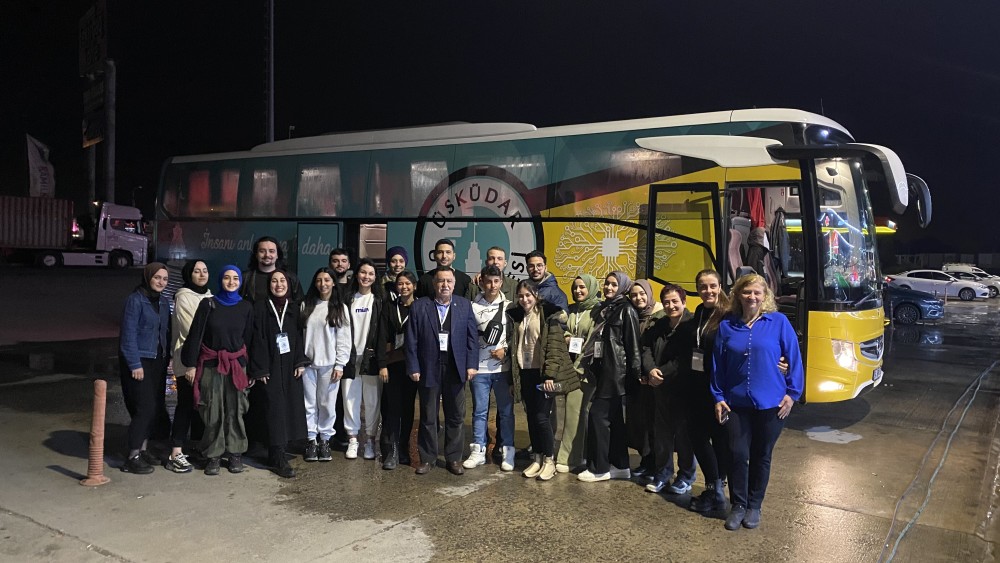
Üsküdar University has continued its support and work for the region since the first day after the disaster of the century which was centered in Kahramanmaraş on February 6 and caused devastating results in 11 provinces. The academic personnel, administrative personnel and students of the Üsküdar family that have started an aid campaign since the first say of the earthquake, have delivered and continued to deliver the aid they have collected in cash and in kind to the region. Moreover, academicians continue their research and studies in the region. Aid mobilization started from the first day Üsküdar University also sent relief materials consisting of 5 buses to the region in the first two days of the earth quake in the coordination of the Istanbul Provincial Representative of the Ministry of Youth and Sports Department Özcan Demir’s management and the Turkish University Sports Federation. The members of Üsküdar University, which was immediately organized as of the first hours of the earthquake and started a full mobilization with its academic personnel, administrative personnel and students, delivered the materials they collected from the Main Campus to the transfer points to be delivered to the earthquake regions every day. Prof. Tayfun Uzbay worked to supply medicines to earthquake victims… Üsküdar University Advisor to the Rector, Head of the Department of Medical Sciences and Member of the Central Delegation of the Turkish Pharmacists’ Association. Prof. Tayfun Uzbay, who continued his work in Ankara as a member of the Central Delegation of the Turkish Pharmacists’ Association after the earthquake, said that 25 field pharmacies were established for the victims affected by the earthquake and needed medicines, and medicines were provided free of charge. Selman Utku carried out various activities in the debris zone day and night Selman Utku, an expert at Üsküdar University Health, Culture and Sports Department, voluntarily carried out activities in the earthquake zone with the “Camp Fire Türkiye Search and Rescue Association” after two earthquakes of 7.68 magnitude in Kahramanmaraş and 7.6 magnitude in Gaziantep on February 6. In the search and rescue efforts, the team consisting of 8 people, including Utku, played a major role in the rescue of 14 of our citizens from under the debris. Utku, who participated in search and rescue operations in various regions in the disaster area through the Camp Fire Türkiye Search and Rescue Association, carried out relief efforts in Reyhanlı, Samandağ, Altınözü, Kırıkhan, Terzihöyük Village, Odabaşı Neighborhood, Akevler Neighborhood and Rönesans Residence locations of Hatay. In the following days, Utku took part as a team leader in organizing the aid coming from various regions of Türkiye and distributing it to the villages in need. At night, search and rescue operations continued in the debris of the collapsed buildings within the scope of verified information later in the day. OHS academics went to the earthquake region and made investigations Üsküdar University Faculty of Health Sciences, Department of Occupational Health and Safety and Vocational School of Health Services (VSHS) academicians went to the earthquake area and made investigations. Academicians have proposed the creation of earthquake museums in cities destroyed by the earthquake, examples of which have been found in Japan. Dr. Rüştü Uçan: “Earthquake museums can keep social memory alive” OHS Specialist Dr. Rüştü Uçan said that the museums where the items recovered from the debris will be exhibited can be turned into a symbol so that earthquakes are not forgotten. Psychological Support Service is provided Üsküdar University NPİSTANBUL Brain Hospital specialists provide ‘Free Earthquake Trauma Psychology Support Line’ service for students and employees affected by the earthquake disaster. Prof. Nevzat Tarhan said that “When the damages of the earthquake begin to be eliminated, the mental damages begin.” President of Üsküdar University, Psychiatrist Prof. Nevzat Tarhan, who stated that the mental damages occur when the debris of the earthquake begins to be eliminated, said that “There was also a very quick reaction to the psychological support. We have established psychological support lines. Psychiatric problems are just beginning to emerge. When the damages of the earthquake begin to be eliminated, the mental damages begin. We are stronger and more resilient than many societies. Let’s learn lessons. Let us be strong within us. You will spread the feelings of brotherhood and friendship to the society so that you can make the world brotherhood. We cannot achieve regional unity outside without unity at home. This is one of the most important lessons of fate.”. During Ramadan, we went to the earthquake region… After the earthquakes that were effective in 11 provinces and called the disaster of the century, the earthquake victims in Kahramanmaraş and Hatay were visited under the leadership of Üsküdar University Health, Culture and Sports (HCS) Department and Hold My Hand Association. During the visit where food and clothing aid was provided, the people of Üsküdar, who brought gifts to the children who felt the pain of the earthquake most deeply, relieved their pain to a certain extent with the colorful and entertaining activities they organized. Students affected by the earthquake were met… A team of 30 people who visited Dedeler Elementary-Secondary School in Türkoğlu district of Kahramanmaraş carried out activities with children and provided clothes and supplies. The pain was tried to be relieved with activities… Entertaining activities such as magic and clown shows were held. Face paint was applied to children, and also candy and balloons were given. Reyhanlı Education Campus was visited… On the other hand, the team, which stopped by Hatay after Kahramanmaraş, visited Reyhanlı Education Campus which is an international educational institution. Refreshments were offered to earthquake victims in tent cities… The Üsküdar delegation visited the tent cities in the center of Antakya in the earthquake region and offered treats to the children there. Üsküdar University’s “Earthquake Manifesto” This year, the 5th International Congress of Positive Psychology by Üsküdar University with the theme of “The Science of Kindness / What does Kindness Yields? & Growth after Earthquake and Trauma” lasted for three days. In the “Manifesto for Post-Traumatic Growth as a Result
The earthquake devastating for Turkish Nation was highlighted at the SBMT Meeting in the USA
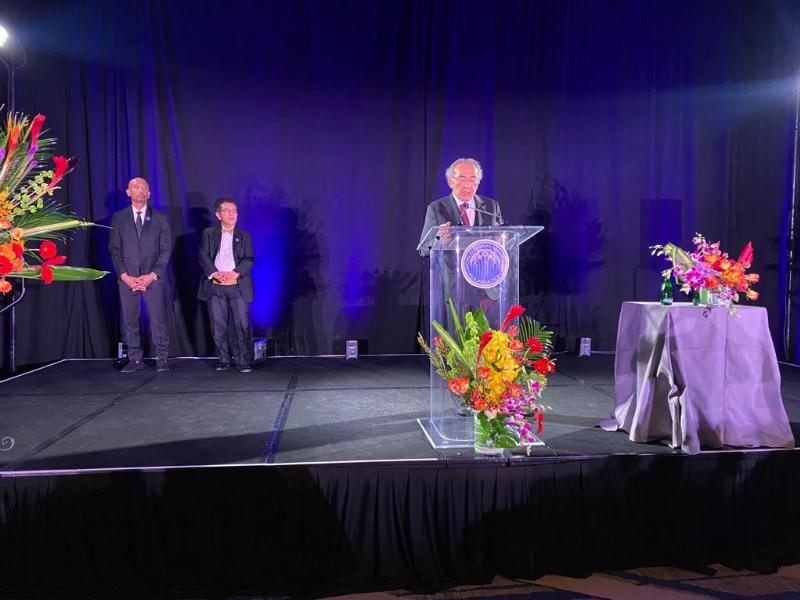
In the 20th congress held by the Society for Brain Mapping and Therapeutics – SBMT where distinguished scientists around the world attend, attention was called to the earthquake deeply effecting Türkiye. Congress organizers presented the special video prepared for the earthquake and Prof. Nevzat Tarhan emphasized destructive effect of earthquake in terms of both physical and psychological aspects. In the meeting where only Üsküdar University and NPİSTANBUL Hospital researchers attended from Türkiye, the research team led by President of Üsküdar University Prof. Nevzat Tarhan, represented our country in two sessions titled “TMS in Neuropsychiatric Disorders – Novel Protocols and Applications” and “Neuromodulations Applications and Neurotechnology”. At the congress, Prof. Nevzat Tarhan made a presentation titled “Theta Burst Stimulation as a Neuromodulation Tool”. In his presentation, Tarhan shared using TMU in psychiatry, neuromodulation techniques, ECT-TMU comparison and examples on the current theta burst studies in brain stimulation with TMU in future treatment algorithms. Tarhan conveyed his remarks on earthquakes of 7.7 and 7.6 magnitude which took place in Pazarcık and Elbistan districts of Kahramanmaraş in the congress. It is the biggest earthquake that planet has ever seen in Türkiye… Katılım sağladığı kongrede 10 ili etkilen ve tüm Türkiye’yi yasa boğan deprem afetine dikkat çeken Üsküdar Üniversitesi Kurucu Rektörü Prof. Dr. Nevzat Tarhan; “Sizlerin de bildiği üzere gelmiş geçmiş en büyük, en şiddetli ve çok uzun süren, uzun fay hattı olan bir deprem felaketi yaşadık. Türkiye’de yerküre üzerinde görünmüş en büyük depremdi. Çok büyük bir felaketti. Neredeyse küçük bir kıyamet gibiydi. Ne yazık ki can kaybımız on binleri aştı. Gördüğümüz bu alanda 200 metre genişliğinde bir yarık oluştu. Dünyanın dört bir yanından gelen kurtarma ekibiyle olağanüstü bir destek sağlandı. Amerika, Singapur ve Japonya gibi daha birçok ülkeden destek sağlandı. Sadece maddi değil, aynı zamanda manevi bir yardım da gördük. Biz Türkiye’de yaşadığımız bu zorlukların üstesinden geleceğiz. Sizin iyi niyet göstergeleriniz bizim için çok önemlidir. Manevi değerleriniz ve Türk insanına gösterdiğiniz müthiş desteğiniz ve psikolojik desteğiniz de bizler için önemli. Bildiğiniz üzere krizlerin bir de fırsat boyutu ve aynı zamanda da tehdit boyutu vardır. Bir psikiyatrist olarak şu an ben de bunu gözlemlemekteyim. Bu felaketten sonra dünyanın geleceğine dair daha ümitliyim çünkü dünyamızda iyi insanlar da var ve gerektiğinde dünyanın her yerinden harekete geçiyorlar. Böyle bir durumda biz bunu gözlemledik. Bu dünyayı daha yaşanabilir hale getirecek şey nezaket, iyilik ve iş birliği olacaktır. Fırsat boyutunun bu yönde olduğunu düşünüyorum.” şeklinde konuştu. President of Üsküdar University Prof. Nevzat Tarhan pointed out the earthquake that affected 10 provinces and devastating all of Türkiye at the congress he participated and Prof. Tarhan said: “As you know, we experienced the largest, the most severe, long-lasting and long Faultline earthquake disaster that our planet has ever seen in Türkiye. It was a big disaster. It was like a little doomsday. The death toll is estimated that it exceeded tens of thousands. Unfortunately, there were a rift in the earth with 200-meter width in this area you saw. Rescue teams all over the word gave extraordinary support from all over the world such as America, Singapore and Japan, from many countries. And, not only financial but also moral assistance was received. We will overcome these difficulties in Türkiye but your assistance your good vicious is really important for us. There are world-wide moral values. There is big support, psychological support to Turkish people. As you know, crisis have an opportunity dimension as well as threat dimension. As a psychiatrist, I have also observed this now. I am more hopeful for the future of the world now after this disaster. And, because there are good people in our world too and they take action when it is necessary from all over the world. We have observed this during these events. The thing that make the world more livable will be kindness, goodness and cooperation. This is the opportunity dimension I think. A video on the Kahramanmaraş earthquake was prepared… In the program held in the shadow of the devastating earthquake in Türkiye, the organizers showed that they are sharing the sorrow of Türkiye by presenting the video they prepared. President of the SBMT Dr. Vicky Yamamoto and President of Administrative Board Dr. Babak Kateb showed all the participants watch the video in the gala night. Üsküdar News Agency (ÜNA) Play Play
Aid Campaign to the earthquake zone from Üsküdar University…
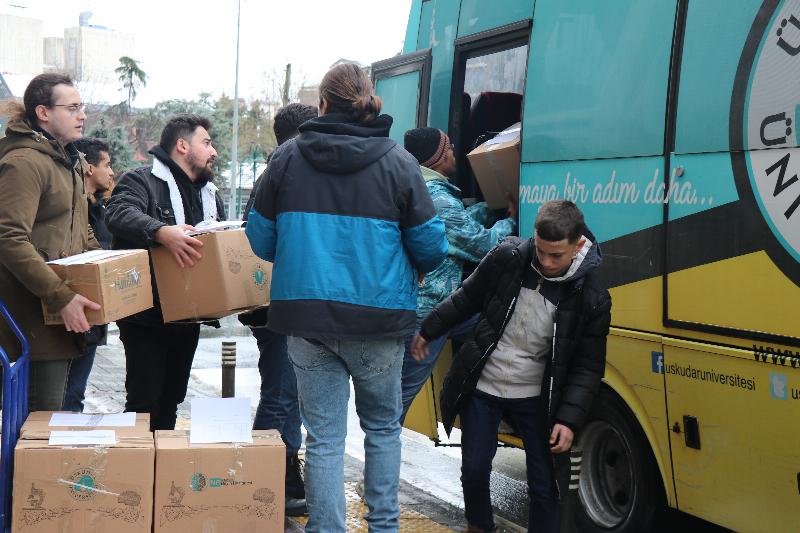
Üsküdar University also has started a campaign to be a cure for the wounds even to some extend while we are experiencing profound sorrow of the two Kahramanmaraş centered earthquakes in Türkiye. Academic personnel, administrative personnel and students of the Üsküdar family sends the in kind and in cash aid collected to the region since the first day of the earthquake. 1000 packages were delivered to the region on the third day of the earthquake, which include basic needs such as food, cloths, hygiene products, blankets, medical products, baby products… Türkiye tries to heal the wounds of the two Kahramanmaraş centered earthquake affection 10 provinces. The Üsküdar University family also have started an aid campaign for the earthquake where thousands of people lost their lives or have injured. In the aid coordinated by Istanbul Provincial Representative of the Ministry of Youth and Sports, the head of the Üsküdar University Health, Culture and Sports Department Özcan Demir and the Turkish University Sports Federation, Üsküdar University sent aid supplies by 5 buses to the region in the first two days of the earthquake. As of the first hours of the earthquake, the members of Üsküdar University immediately organized and started a full mobilization with academic, administrative and students and they continue to deliver the materials they collect from the Central Campus to the transfer points to be delivered to the earthquake regions every day. Üsküdar University sent 1000 packages to the region within the scope of in kind and in chase aid in this context. Packages included; – Blanket, pillow, sheet, sleeping bag – Diaper, feeding bottle – Baby food – Female hygiene set – Outwear (coat, hat, boots, raincoat, scarf, neckerchief, beanie, gloves) – Cloths (top and bottom clothing, underclothes) – Cleaning and hygiene products (Napkin, wet wipes, tooth brush, towel, soap, etc.) – Beverage (Water, juice, milk) – Basic Food (Canned food, pasta, dry legumes, biscuits, etc.) – Shoes (Boots, sneakers) – Socks, booties – Other materials (Book, toys, batteries, food for animals, etc.) – Medical materials, drugs Psychological Support Service… Moreover, Psychological Counsel unit within the HCS Department provides psychological support service for students and personnel who were affected by the disaster. Üsküdar News Agency (ÜNA)
Leading Brain Mapping Scientists, Senator Chris Murphy, Sandy Hook Promise Foundation, and Doctors from Ukraine amongst award recipients of the 20th Annual Gathering for Cure (GFC) Gala of the World Brain Mapping Foundation

The 20th Annual “Gathering for Cure (GFC)” Gala of WBMF, which is a black tie fundraiser that resembles the Oscars but for neuroscientists, will be held at the Intercontinental Hotel in Downtown LA on Friday, Feb. 17th, 2023, 6-8 PM Red Carpet and 8-11 PM GFC Award presentation and Banquet. The renowned actor and TV personality Mr. Montel Williams will co-host the GFC award show. Major General Paul A. Friedrichs, Joint Staff Surgeon at the Pentagon, will be the Honorary guest. 300+ celebrities and scientists will attend this fundraiser, and the tickets are available on the WBMF website. Like the Oscars, the GFC awards are in different categories; Pioneer in Medicine recipients are Dr. Paul M. Thompson and Lawrence Steinman for their groundbreaking work in Brain Mapping and Multiple Sclerosis (MS). NICO Corporation founder and CEO, Mr. Jim Pearson, will be the recipient of the 2023 Pioneer in Technology Development for inventing life-saving neuro-technologies. Honorable Senator Christopher Murphy is the recipient of the 2023 Pioneer in Healthcare Policy award for his active legislation on mental health and neurological disorders, including Parkinson’s Disease. “It is important to highlight and recognize the work done by these pioneering colleagues because the public need to celebrate scientists and their discoveries at the same level as artists and musicians,” said Dr. Babak Kateb, President of WBMF and Chairman of the Board of SBMT. The 2023 WBMF Humanitarian award and the Sunder Foundation Rukmini Rajagopal Medal will be presented to two Ukrainian Doctors, Oleksandra Kashurina and Kateryna Potapova, and an Italian Neurosurgeon, Dr. Giuseppe Umana. They have saved many injured Ukrainians and a NATO soldier as part of the WBMF-SBMT Global Physicians and Scientists (GPS) humanitarian prog, which aims to bring the best science, technology, and medicine to the war zones and regions in need. “Last year, we established a humanitarian mission for Ukraine, and one year later, we are pleased to recognize our colleagues and encourage the public to support the ‘GPS program,” said Dr. Vicky Yamamoto, 20th President of SBMT. The 2023 Golden Axon award for leadership in the field will be presented to Doctors Keerthy Sunder, Christopher Wheeler, and NBC reporter and anchorman Mr. John Klemack for leading SBMT subcommittees on Alzheimer’s and Dementia, Psychiatry, and Opioid Addiction as well as highlighting our programs in brain cancer in the news, respectively. Sandy Hook Promise Foundation co-founders Ms. Nicole Hockley and Mr. Mark Barden will be recipients of the Beacon of Courage and Dedication award at the GFC Gala this year due to their incredible work at saving children’s lives through their programs. Drs. Jothsna Bodhanapati, James Okereke, Nataliia Fedorchenko, Kateryna Potapova, and Ms. Lila Kendall are recipients of the Student Service and Leadership award as part of the WBMF Fellows and Interns program. The GFC gala will be in parallel with the 20th Annual World Congress of SBMT, which includes 900+ presenters, 15 keynotes, Bioskills Labs, and an Exhibition Hall covering all neurological disorders. This event is also open to the public; patients and their families can register online. Both the gala and convention are made possible by generous contributions of the public and the following organizations: ARAMIS Group, Infinity Arc Radiotherapy (iART), World Brain Mapping Foundation (WBMF), Karma Docs & Associates, Sunder Foundation, Mind-Eye Institute, The Massoudi Foundation, Celularity, Applied Neuroscience Inc., Dr. Laura Purdy, Datar Cancer Genetics, Fulgent Genetics, NOVARAD, The Bill and Lee Stein-Wood Foundation, Mitaka, BrainScope, NuCalm, MagVentures, Globus Medical, Medeia/BrainView, Loma Linda University, Neuro-Optometric and Rehabilitation Association (NORA), and Surrey Capital. For More Information about SBMT, visit: www.WorldBrainMapping.Org Media Contact: Dr. Kevin Morris, MD Vice President of Strategic Partnerships and Alliance at SBMT Cell: 951-441-4331 Kevin.Morris@WorldBrainMapping.Org View original content to download multimedia:https://www.prnewswire.com/news-releases/leading-brain-mapping-scientists-senator-chris-murphy-sandy-hook-promise-foundation-and-doctors-from-ukraine-amongst-award-recipients-of-the-20th-annual-gathering-for-cure-gfc-gala-of-the-world-brain-mapping-foundation-301741328.html SOURCE Brain Mapping Foundation
Ukrainian physicians on the frontline amongst 900 presenters at the 20th Annual World Congress of Society for Brain Mapping and Therapeutics (SBMT) in LA

Leading neuroscientists, neurosurgeons, neurologists and psychiatrists will be gathering at the LA Convention Center on Feb. 16-19th 2023 LOS ANGELES, Feb. 1, 2023 /PRNewswire/ — Last year, the Society for Brain Mapping and Therapeutics (SBMT) established a task force to help Ukraine with medical humanitarian missions including engaging physicians and neurosurgeons in combat casualty care and medical supply support. This year, the Ukrainian Medical Team supported by SBMT will present their work at the 20th Annual World Congress of SBMT (Brain, Spine and Mental Health) at the LA Convention Center on Feb. 16-19, 2023. “We are using our convention to not only advance the neurotechnology to treat neuropsychiatric, spine and brain disorders but impact people in war zones through our humanitarian missions.” Said, Dr. Vicky Yamamoto, 20th President, Executive Director of SBMT, and a cancer scientist at Keck School of Medicine of USC. SBMT’s Global Physicians and Scientists (GPS) is supported by the World Brain Mapping Foundation and Sunder Foundation to bring the best science technology and innovation to individuals in rural areas and war zones. This year’s convention scientific program includes nearly 900 presenters in 9 tracks, covering all neurological, spine and mental health disorders with 15 keynotes and two bioskills / cadaver labs covering new neurosurgical techniques for brain and spine therapy and diagnostics. Our Keynote lineup this year include: Dr./Major General Paul Friedrichs (Surgeon General of the Joint Chiefs of Staff, The Pentagon), Donald Medlin (Infinity Arc Radio-Therapy-iART), Drs. Deepak Chopra (The Chopra Foundation), Jennifer Fogarty (NASA-Translational Research Institute for Space Health-TRISH), Farzad Massoudi (Datar Cancer Genetics), Diana Ramos (Surgeon General of California), Lawrence Steinman (Stanford University), Alex Khalessi (UCSD), Paul M. Thompson (Keck School of Medicine of USC), Minesh Mehta (Baptist Health South Florida), Howard B. Moss (UCR), Nicole Hockley (Sandy Hook Promise), Kathy M. Lee (US DoD, War Fighter Brain Health Initiative) and Montel Williams (Actor, Producer and TV personality). The Convention will have two Keynote panels on “Advanced Cancer Therapy” and “The Psychology of the Brain and Gun Violence.” Convention registration and membership are open to the public and made possible by the generous support of ARAMIS Group, Infinity Arc Radiotherapy (iART), World Brain Mapping Foundation (WBMF), Karma Docs, Sunder Foundation, Mind-Eye Institute, Massoudi Foundation, Celularity, Applied Neuroscience Inc., Dr. Laura Purdy, Datar Cancer Genetics, Fulgent Genetics, NOVARAD, Bill and Lee Stein-Wood Foundation, Mitaka, BrainScope, NuClam, MagVenture, Globus Medical, BrainView, Loma Linda University, Neuro-Optometric and Rehabilitation Association (NORA), Olympus, Stryker, Mizuho, KLS Martin, Beomni, Surrey Capital and A Productions. Industry leaders could exhibit at this world-class convention by completing the form online or contacting us at 310-500-6196. The convention is free for all students including undergraduates, graduates, post graduate, medical students, residents, postdocs and fellows with valid ID. For More Information about SBMT visit: www.WorldBrainMapping.Org Media Contact: Dr. Kevin Morris, MD Vice President of Strategic Partnership and Alliance at SBMT Cell: 951-441-4331 Kevin.Morris@WorldBrainMapping.Org SOURCE Society for Brain Mapping and Therapeutics
The Sunder Foundation Awards 2023

The Sunder Foundation Awards 2023 The Sunder Foundation & The World Brain Mapping Foundation are collaborating to support SBMT’s Global Physicians and Scientists (GPS) to bring the best science, technology, and innovation to individuals in rural areas and war zones. This year, at the 20th Annual SBMT World Congress, there will be close to 900 presenters covering a wide array of topics including Neuroscience & Psychiatry. At the conference, the 2023 Sunder Foundation Rukmini Rajagopal Medal and the WBMF Humanitarian award will be presented to two Ukrainian Doctors, Oleksandra Kashurina and Kateryna Potapova, and an Italian Neurosurgeon, Dr. Giuseppe Umana. They have saved many injured Ukrainians and a NATO soldier as part of the WBMF-SBMT Global Physicians and Scientists (GPS) humanitarian program. Learn more about these awards and awardees as we appreciate and honor the contributions of these trailblazing colleagues at the 20th Annual “Gathering for Cure” Black Tie Awards Gala on the 17th of February 2023 at the InterContinental Hotel, LA. Read about the event, and join us from February 16th – February 19th for an enriching experience!
WBMF: JPL’s Electronic Nose May Provide Neurosurgeons with A New Weapon Against Brain Cancer
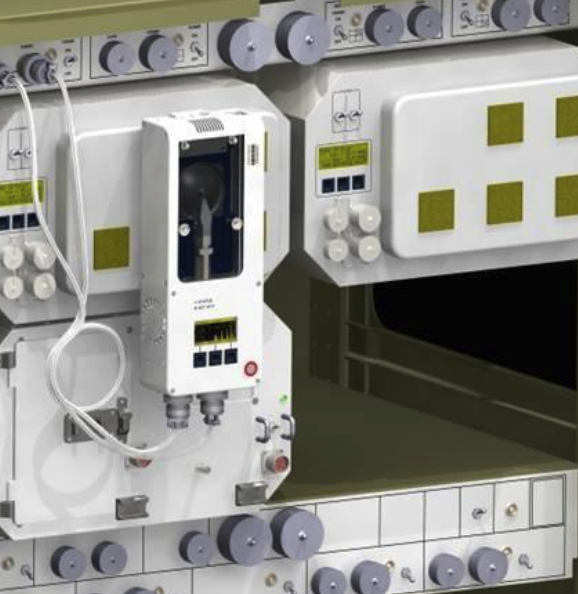
The JPL Electronic Nose (ENose) is a full-time, continuously operating event monitor designed to detect air contamination from spills and leaks in the crew habitat in the International Space Station. It fills the long-standing gap between onboard alarms and complex analytical instruments. ENose provides rapid, early identification and quantification of atmospheric changes caused by chemical species to which it has been trained. ENose can also be used to monitor cleanup processes after a leak or a spill. Experiment Description RESEARCH OVERVIEW DESCRIPTION The JPL Electronic Nose (ENose) is an array-based sensing system which contains 32 conductometric sensors. The Second Generation ENose was trained to detect, identify and quantify 21 chemical species, the majority of which are organic solvents or commonly used organic compounds, which might be released through a leak or a spill in a spacecraft crew cabin. It was extensively ground-tested, and includes data analysis software which will identify and quantify the release of a target chemical within 40 minutes of detection. Past ENose investigations have focused on organic compounds such as common solvents and a few selected inorganic compounds, ammonia, water and hydrazine. For the new ENose to be performed on the ISS, two inorganic species have now been added to the analyte set, mercury and sulfur dioxide. To accommodate these inorganic species, the sensor array will incorporate a hybrid sensor approach, including both new sensing materials and new sensing platforms made up of microhotplate sensor substrates. Materials approaches to these analytes have been determined using models of sensor-analyte response developed under this program. Predictive models will also be used to complement array training for additional software analyses including chemical family identification and identification of unknown analytes. Analysis of data taken by the sensor array will be included on the ENose control computer, and event analysis will be available within 40 minutes of event onset. The ENose event monitor, by identifying and quantifying trained-for chemical species, fills the gap between an alarm (which provides no ID or quantification) and high-end analytical instruments. ENose has demonstrated a wide dynamic range, ranging from fractional ppm to 10,000 ppm. Its array based sensing mechanism means that it can be trained to detect new chemical species, and training data can be uplinked to add new species to its on-board data library. ENose runs continuously (30 to 360 data points/hr) and autonomously; it requires only minimal crew interaction and requires no consumables. The ENose is low mass (less than 4 kg), small volume (less than 4 liters) and low power (less than 20 W), in addition to being microgravity-insensitive, robust, and rugged. It is capable of analyzing volatile aerosols as well as vapors. Future applications of the JPL ENose may also include environments other than the spacecraft crew cabin and similar enclosed environments. Such applications may include integration with larger devices such as analytical instruments, and with environmental monitoring and control systems. back to top Applications SPACE APPLICATIONS The JPL ENose is envisioned to be one part of a distributed system for automated monitoring and control of the breathing atmosphere in inhabited spacecraft in microgravity. It is designed as an event or incident monitor, capable of providing rapid, early identification and quantification of changes in the atmosphere caused by leaks or spills of compounds to which the device has been trained. The flexibility of the device includes the ability to be trained to new compounds, the possibility of providing sensor sets for particular analyte suites, and a wide dynamic range (fractional ppm to 10,000 ppm), making it a valuable part of an air quality monitoring and control system that is comprised of several types of instruments. Such a system can be included in an environmental control system which actuates remediation of anomalous events. EARTH APPLICATIONS Many important and diverse Earth-based applications exist for ENose technology. One major driver is the current need for advanced detection devices for security (both civilian and military) and health safety applications, such as the detection of explosives and infection monitoring. back to top Operations OPERATIONAL REQUIREMENTS AND PROTOCOLS Upon arrival on board ISS, ENose will be unpacked from stowage and set up by a crewmember. ENose will be affixed to an EXPRESS Rack for power. ENose will run continuously for minimum of six months; data will be transferred to ground in Health and Status packets and in periodic file transfer. Data will also be archived in ENose until file transfer (up to 30 days). The crewmembers will perform periodic confirmational events to collect air samples in vicinity of ENose for analysis on ground. ISS crewmembers will retrieve the ENose from stowage and install it on an EXPRESS Rack with a bracket assembly and/or Velcro; connect the power cable and the data cable. ENose will be powered on and the crewmember will verify the following: LED illumination; display operation; clear air inlet and outlets. ENose is autonomous with possible occasional crew commanding and periodic status checks (once or twice per month). Crewmembers will have periodic attended events if ENose detects a potential spill or leak. When ENose is relocated, the crewmember will need to reset the IP address. RESULTS PUBLICATIONS Copy citations FLIGHT PREPARATION RESULTS PUBLICATIONS
